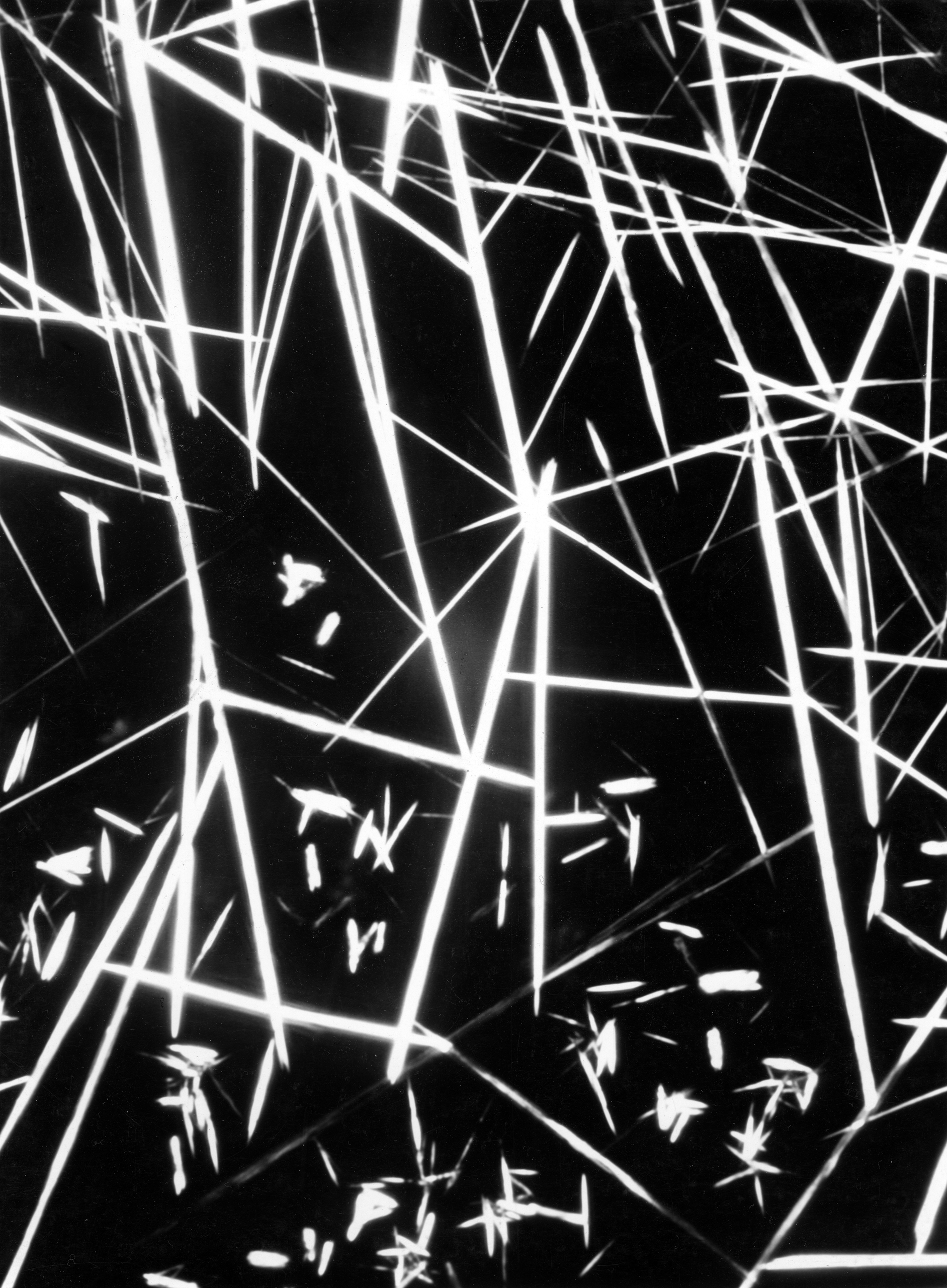
Documentary could not appear, at first, further from the practice of abstract photography; a difference between reflection and construction. Except for 20th century German Carl Strüwe, who spent three decades photographing natural specimens through a microscope. His work bridged the separate practices of documentary and abstraction, art and science and Germany’s pre- and post-war artists. Now, with a new exhibit at Steven Kasher Gallery, the hope is to bridge the historical relevance of European abstract photography with today’s U.S. contemporaries.
Looking at Strüwe’s work is like looking at a reflection in a funhouse mirror. The initial unrecognizable image surprises and then begs for further inspection. Juncus is a dizzying web of fibers layered atop one another, slightly offset, forming a tangled, three-dimensional space. Some photographs hit like a locomotive with repeating patterns. Others are delicate and symbolic. In Crystal of Aspartic Acid, flat diamond shapes float between dark canyons like alien spaceships exploring a new planet. On April 14th, these images and 50 others will be on display at the opening of Carl Strüwe: Microcosmos, at Steven Kasher Gallery – the photographer’s first solo show in the U.S. since 1949.
The timing couldn’t be more apt. The gap between these two exhibits was obvious says curatorial director Anais Feyeux, after meeting young American photographers unaware of 20th century European abstract photographers such as Strüwe. After moving to New York from Paris, she saw an important connection needed to be made between today’s computer-manipulated photography and Strüwe’s use of microscope and experimental printing techniques.
Microscopes, like computers, did not start as artistic tools. Photomicrographs were traditionally used for science and medical research – to study details in plant and animal tissues, among other things – until Strüwe. He highlighted the geometric forms of magnified organic life in the context of art but did not break completely from the empirical tradition. He titled his photographs after the scientific names printed on the microscopic slide like Thread Algae, Fresh Water(Schizogonium murale conferva).
While continuing his professional work as a graphic designer, Strüwe created Formen des Mikrokosmos(Forms of the Microcosmos) in his spare time between 1926 and 1959. He photographed unassisted in his Bielfeld home studio, far removed from the art and cultural hubs of Berlin and Munich. His early ideas about photography, says Feyeux, were influenced by the New Objectivity movement. It wasn’t until after World War II when German artists endeavored to find a national artistic identity, that Strüwe’s work became widely exhibited.
Around this time, his style evolved and his photographs became more symbolic – experimenting with solarization and multiple exposure prints. They were no longer straight-forward – albeit abstracted –documents transferred from his microscope. He began creating new universes within a print by overlapping negatives. MIT’s György Kepes included his work in the monumental 1951 exhibit The New Landscape in Art and Science and he became a figure of the Subjective Photography movement after the war. What started more than thirty years earlier as an interest in the objective ended as a leading example of the subjective, a fitting way to conclude a career of bridging disparate ideas together.
Michael Bucher is a contributor at TIME LightBox.
Carl Strüwe: Microcosmos is on at Steven Kasher Gallery until June 4.




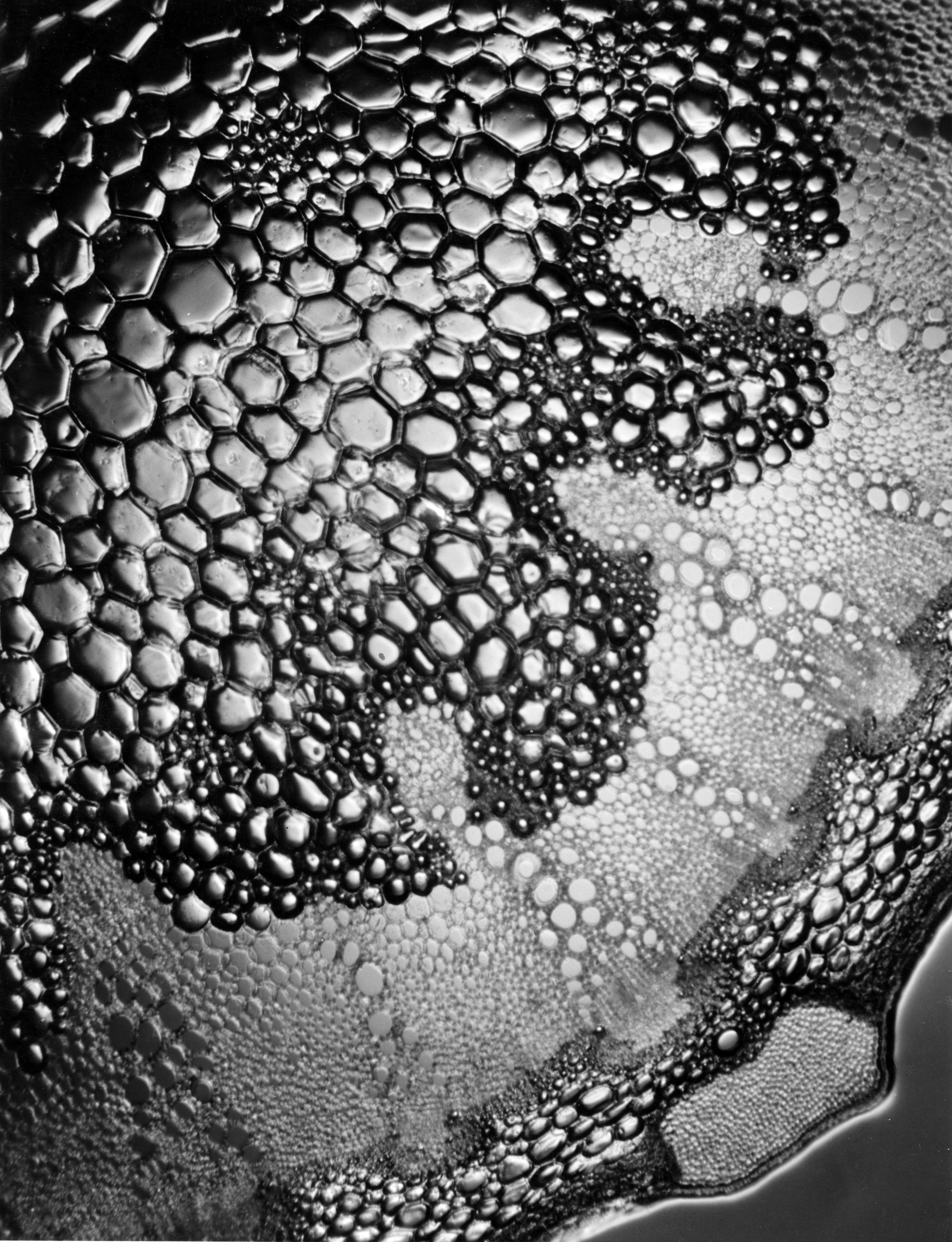
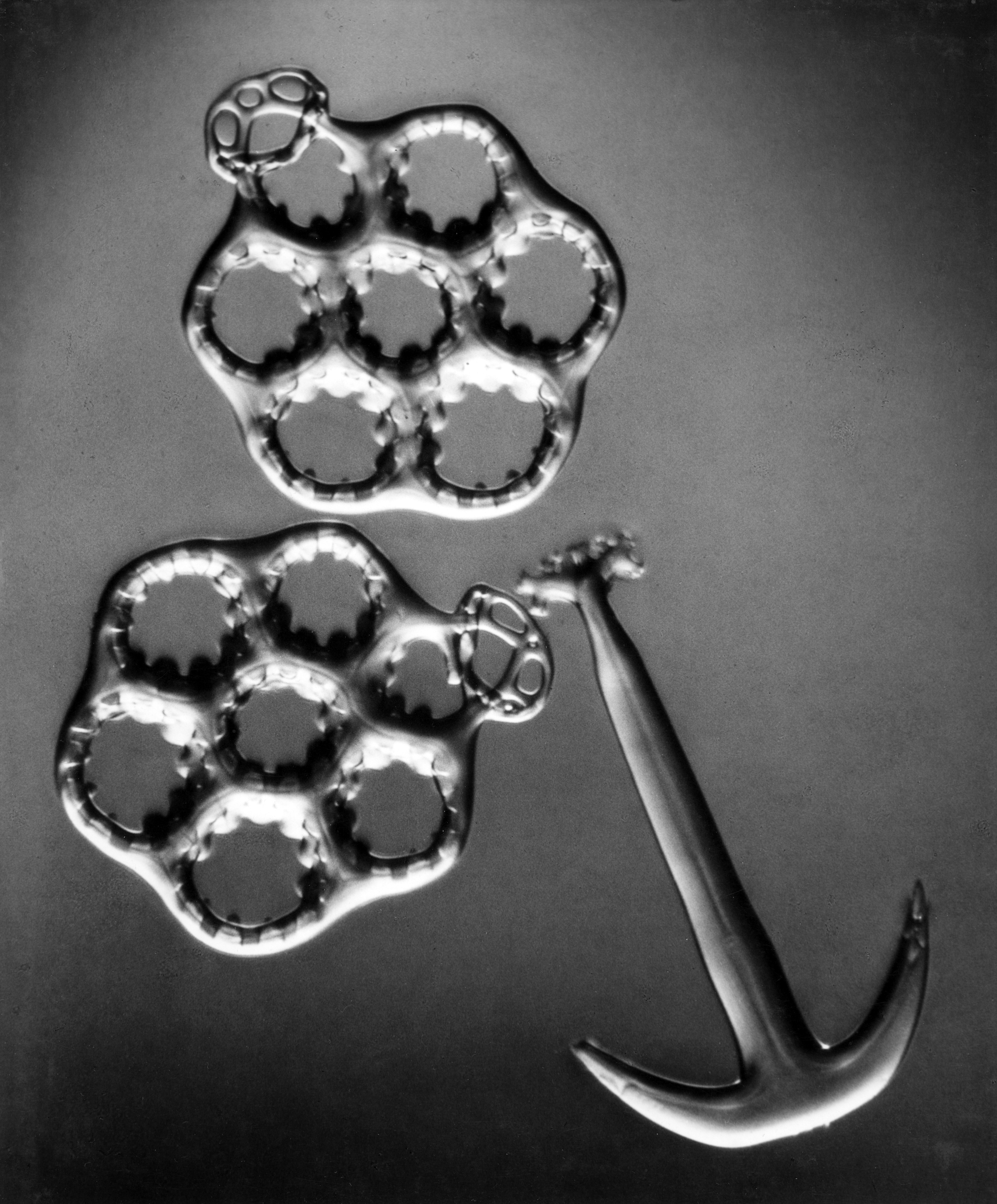


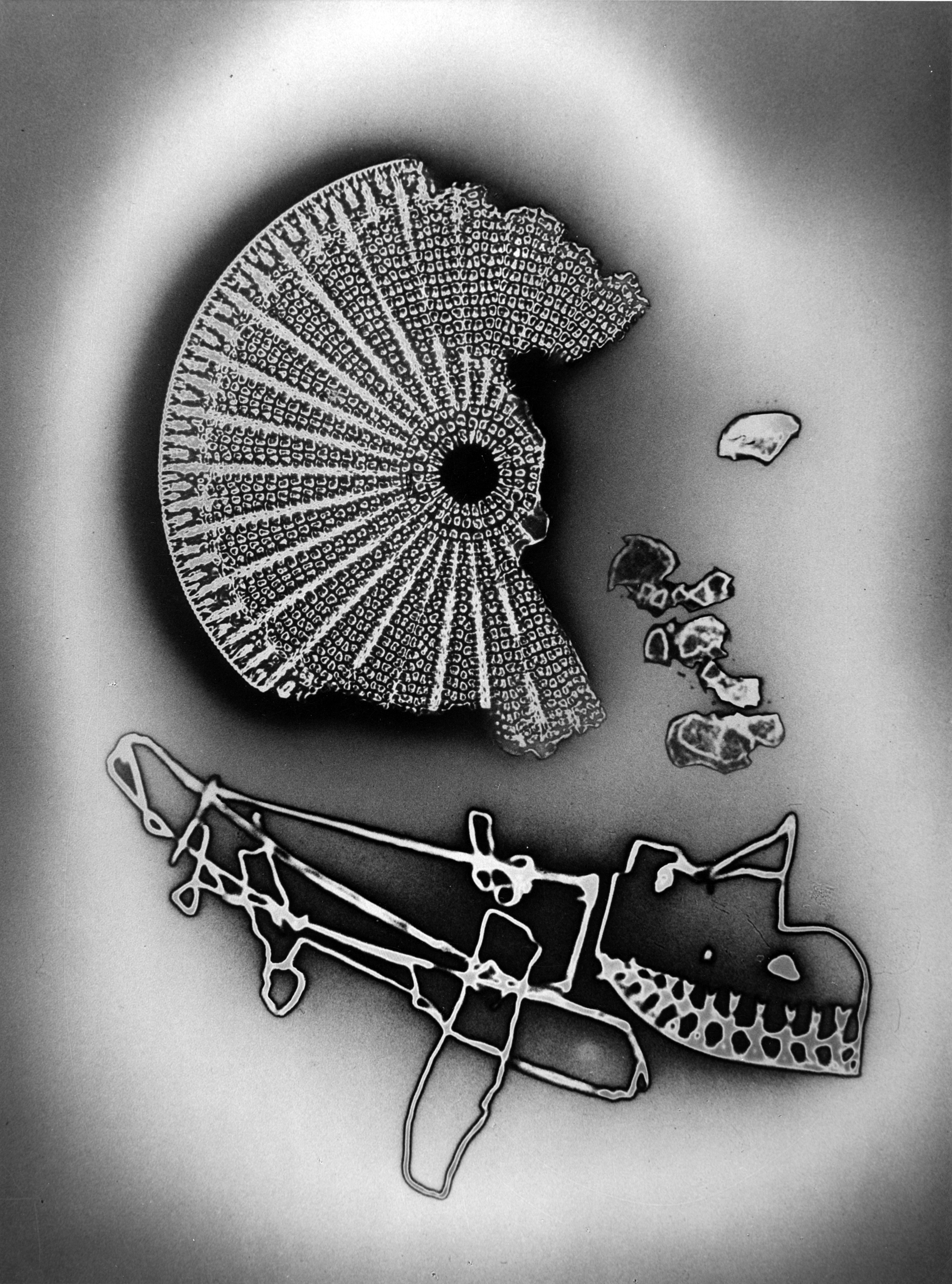
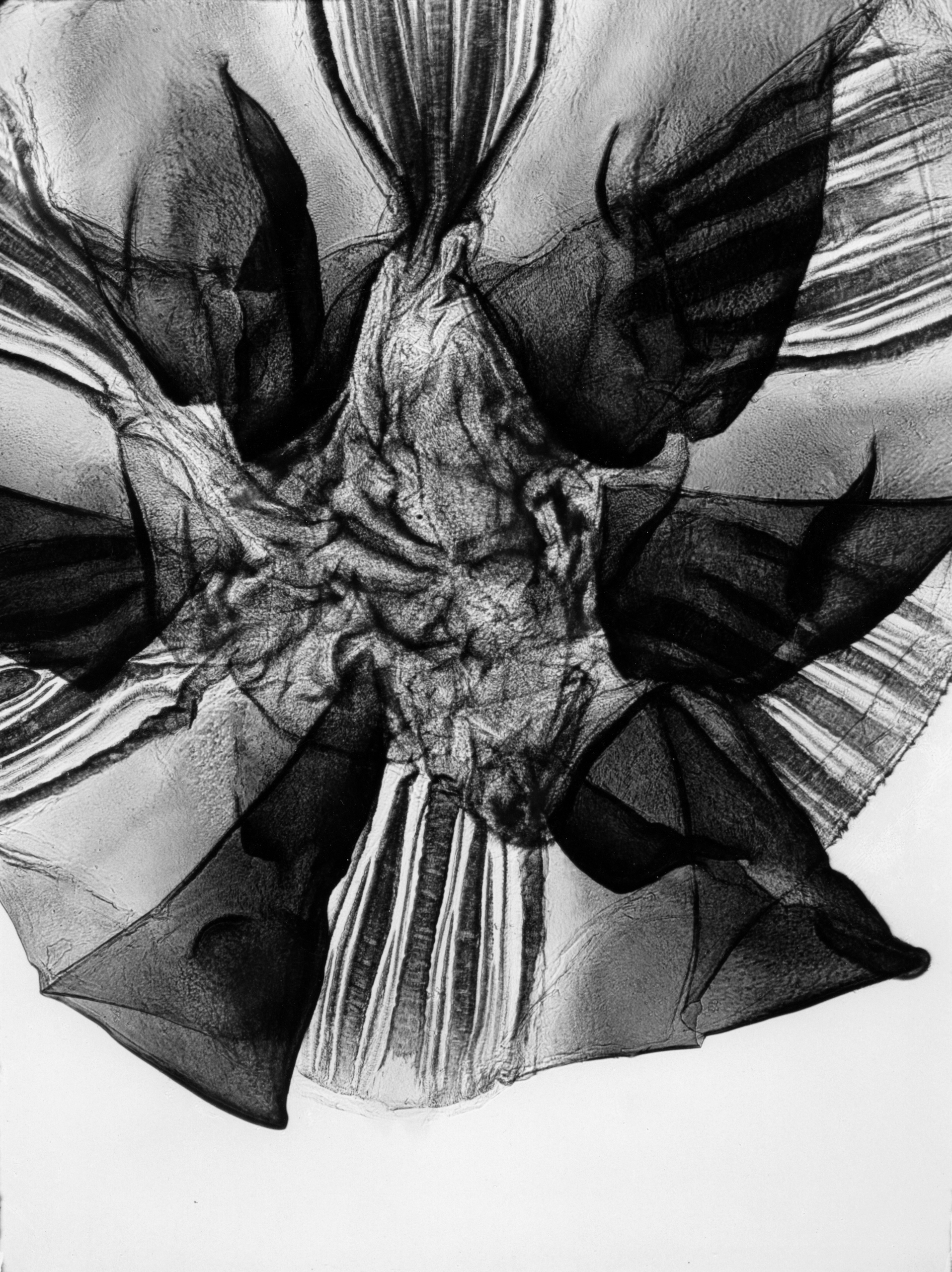
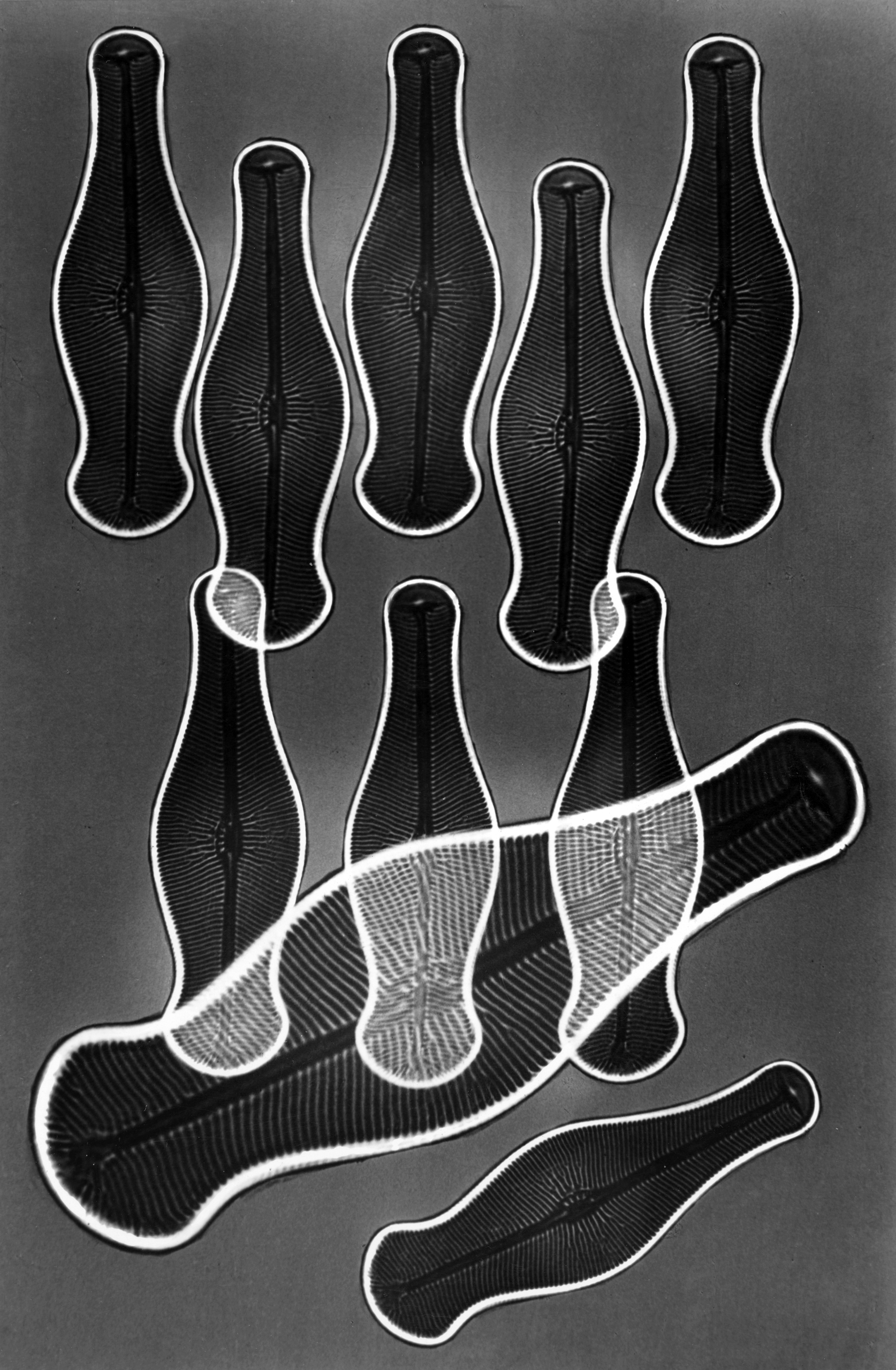
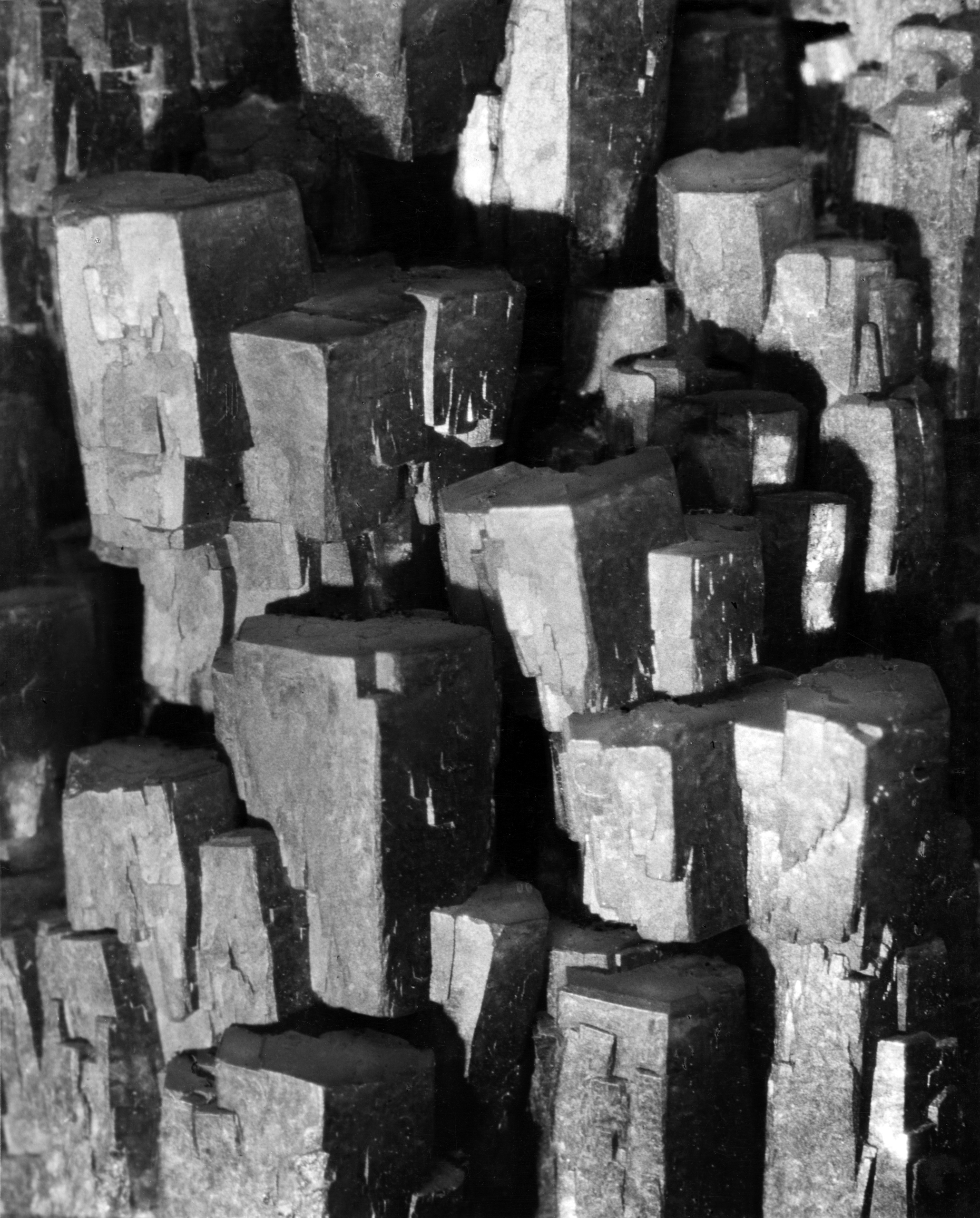
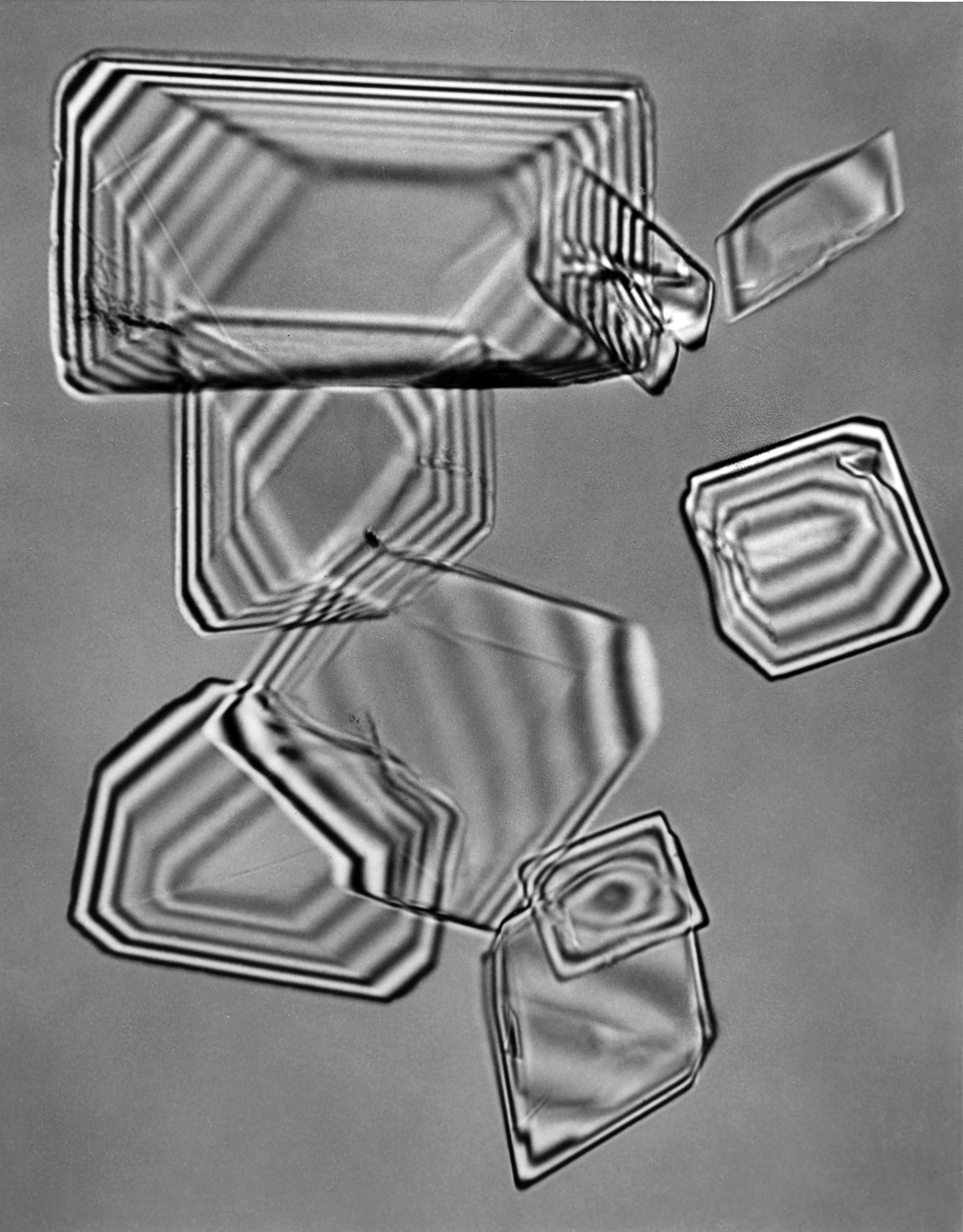
More Must-Reads from TIME
- Cybersecurity Experts Are Sounding the Alarm on DOGE
- Meet the 2025 Women of the Year
- The Harsh Truth About Disability Inclusion
- Why Do More Young Adults Have Cancer?
- Colman Domingo Leads With Radical Love
- How to Get Better at Doing Things Alone
- Michelle Zauner Stares Down the Darkness
Contact us at letters@time.com